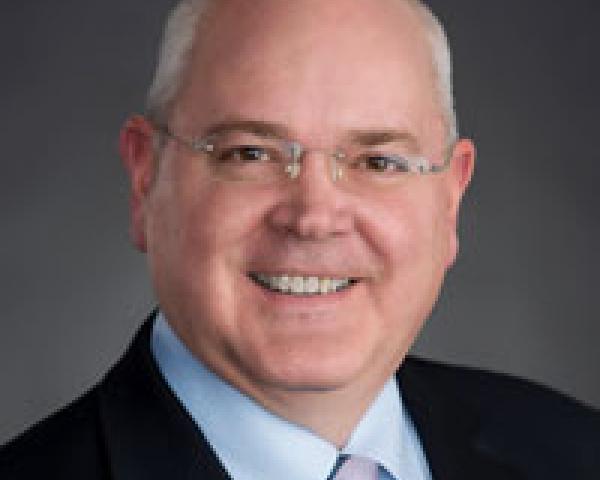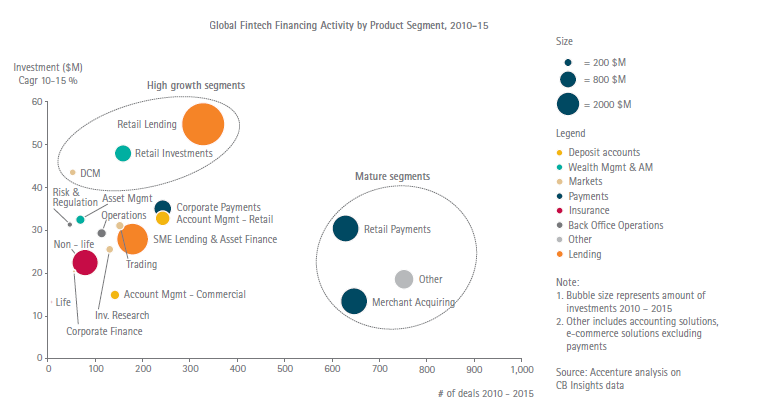A Horror Story on Health Insurance
The author gets caught in a maze after finding he is at severe risk of glaucoma and must act immediately or lose his eyesight.

The author gets caught in a maze after finding he is at severe risk of glaucoma and must act immediately or lose his eyesight.

Get Involved
Our authors are what set Insurance Thought Leadership apart.
|
Partner with us
We’d love to talk to you about how we can improve your marketing ROI.
|

Dan Miller is president of Daniel R. Miller, MPH Consulting. He specializes in healthcare-cost containment, absence-management best practices (STD, LTD, FMLA and workers' comp), integrated disability management and workers’ compensation managed care.
Putting models into production is the fun part -- but requires not only testing but also a plan for monitoring and updating as time goes on.

Get Involved
Our authors are what set Insurance Thought Leadership apart.
|
Partner with us
We’d love to talk to you about how we can improve your marketing ROI.
|

John Johansen is a senior vice president at Majesco. He leads the company's data strategy and business intelligence consulting practice areas. Johansen consults to the insurance industry on the effective use of advanced analytics, data warehousing, business intelligence and strategic application architectures.
Despite the crash and considerable trepidation, the author soon found himself trusting his Tesla to drive while he attended to email.

Get Involved
Our authors are what set Insurance Thought Leadership apart.
|
Partner with us
We’d love to talk to you about how we can improve your marketing ROI.
|

Vivek Wadhwa is a fellow at Arthur and Toni Rembe Rock Center for Corporate Governance, Stanford University; director of research at the Center for Entrepreneurship and Research Commercialization at the Pratt School of Engineering, Duke University; and distinguished fellow at Singularity University.
Start-ups such as LifeDrip and Smart Asset are going after distribution, product, client experience, speed, productivity and more.

Get Involved
Our authors are what set Insurance Thought Leadership apart.
|
Partner with us
We’d love to talk to you about how we can improve your marketing ROI.
|

Amy Radin is a transformation strategist, a scholar-practitioner at Columbia University and an executive adviser.
She partners with senior executives to navigate complex organizational transformations, bringing fresh perspectives shaped by decades of experience across regulated industries and emerging technology landscapes. As a strategic adviser, keynote speaker and workshop facilitator, she helps leaders translate ambitious visions into tangible results that align with evolving stakeholder expectations.
At Columbia University's School of Professional Studies, Radin serves as a scholar-practitioner, where she designed and teaches strategic advocacy in the MS Technology Management program. This role exemplifies her commitment to bridging academic insights with practical business applications, particularly crucial as organizations navigate the complexities of Industry 5.0.
Her approach challenges traditional change management paradigms, introducing frameworks that embrace the realities of today's business environment – from AI and advanced analytics to shifting workforce dynamics. Her methodology, refined through extensive corporate leadership experience, enables executives to build the capabilities needed to drive sustainable transformation in highly regulated environments.
As a member of the Fast Company Executive Board and author of the award-winning book, "The Change Maker's Playbook: How to Seek, Seed and Scale Innovation in Any Company," Radin regularly shares insights that help leaders reimagine their approach to organizational change. Her thought leadership draws from both her scholarly work and hands-on experience implementing transformative initiatives in complex business environments.
Previously, she held senior roles at American Express, served as chief digital officer and one of the corporate world’s first chief innovation officers at Citi and was chief marketing officer at AXA (now Equitable) in the U.S.
Radin holds degrees from Wesleyan University and the Wharton School.
To explore collaboration opportunities or learn more about her work, visit her website or connect with her on LinkedIn.
Life insurance, long a laggard, presents three main opportunities for innovation, and there are signs of, well, life.

Get Involved
Our authors are what set Insurance Thought Leadership apart.
|
Partner with us
We’d love to talk to you about how we can improve your marketing ROI.
|

Amy Radin is a transformation strategist, a scholar-practitioner at Columbia University and an executive adviser.
She partners with senior executives to navigate complex organizational transformations, bringing fresh perspectives shaped by decades of experience across regulated industries and emerging technology landscapes. As a strategic adviser, keynote speaker and workshop facilitator, she helps leaders translate ambitious visions into tangible results that align with evolving stakeholder expectations.
At Columbia University's School of Professional Studies, Radin serves as a scholar-practitioner, where she designed and teaches strategic advocacy in the MS Technology Management program. This role exemplifies her commitment to bridging academic insights with practical business applications, particularly crucial as organizations navigate the complexities of Industry 5.0.
Her approach challenges traditional change management paradigms, introducing frameworks that embrace the realities of today's business environment – from AI and advanced analytics to shifting workforce dynamics. Her methodology, refined through extensive corporate leadership experience, enables executives to build the capabilities needed to drive sustainable transformation in highly regulated environments.
As a member of the Fast Company Executive Board and author of the award-winning book, "The Change Maker's Playbook: How to Seek, Seed and Scale Innovation in Any Company," Radin regularly shares insights that help leaders reimagine their approach to organizational change. Her thought leadership draws from both her scholarly work and hands-on experience implementing transformative initiatives in complex business environments.
Previously, she held senior roles at American Express, served as chief digital officer and one of the corporate world’s first chief innovation officers at Citi and was chief marketing officer at AXA (now Equitable) in the U.S.
Radin holds degrees from Wesleyan University and the Wharton School.
To explore collaboration opportunities or learn more about her work, visit her website or connect with her on LinkedIn.
"The synthetic, opium-like drugs were so potent that six of the agents became ill after handling them. One fell into a coma."

Last spring, Chinese customs agents seized 70 kilograms of the narcotics fentanyl and acetyl fentanyl hidden in a cargo container for Mexico. The synthetic opium-like drugs were so potent that six of the agents became ill after handling them. One fell into a coma.The article goes on to describe how fentanyl often is disguised as hydrocodone and Xanax on the black market -- dangerous drugs by themselves but not nearly as potent or fatal as fentanyl. Because China does not regulate fentanyl or analogs used to create fentanyl, there is a significant financial incentive for the drug dealers -- $810 of materials can create 25 grams of fentanyl and yield as much as $800,000 in pills sold on the black market. See also: Opioids Are the Opiates of the Masses According to the Canadian Globe's expose on the issue (an excellent look at the black market), accessing fentanyl can be as easy as "Sign up for an account, choose a method of payment, and receive the package in three to four business days." Reinforcing the financial model: "A kilogram ordered over the internet – an amount equal in weight to a medium-sized cantaloupe – sells on the street in Calgary for $20 million, making it a drug dealer’s dream." So, fentanyl is a problem. It's 25 to 50 times more potent than morphine. It's highly addictive. It's available fairly easily on the black market. And it is prescribed by doctors. Way too often. Approved by the FDA and on script pads supplied by the DEA, its federal legitimacy adds to the lack of stigma associated with use. Which is one reason why I think Prince could rationalize his use. A doctor likely prescribed it for his chronic pain -- and other patients fall into that same trap (with fentanyl and other dangerous prescription drugs). According to the FDA's own warnings (as reported on drugs.com):
Because of the risks of addiction, abuse and misuse with opioids, even at recommended doses, and because of the greater risks of overdose and death with extended-release opioid formulations, reserve Fentanyl Transdermal system for use in patients for whom alternative treatment options (e.g., non-opioid analgesics or immediate-release opioids) are ineffective, not tolerated or would be otherwise inadequate to provide sufficient management of pain.See also: How to Help Reverse the Opioid Epidemic In my opinion, fentanyl should be used to help people die with dignity during end-of-life care. Period. It's that dangerous. And yet we see it being prescribed, used and paid for. Month. After. Month. If you are prescribing fentanyl: Why? If you are being prescribed fentanyl: Why? If you are paying for someone's fentanyl: Why? Too many people are overdosing and dying not to ask a simple question: Why?
Get Involved
Our authors are what set Insurance Thought Leadership apart.
|
Partner with us
We’d love to talk to you about how we can improve your marketing ROI.
|

Mark Pew is a senior vice president at Prium. He is an expert in workers' compensation medical management, with a focus on prescription drug management. Areas of expertise include: abuse and misuse of opioids and other prescription drugs; managing prescription drug utilization and cost; and best practices for weaning people off dangerous drug regimens.
Spending on InsurTech looks set to surge: What is your strategy to stay abreast of the new opportunities and threats?

 Another reason is that FinTech investors realize that the insurance industry is ripe for disruption. With annual premium revenue of around $5 trillion and assets under management heading toward $15 trillion, the global insurance industry is a huge market. It lags other sectors, notably the banking industry, in adopting digital technology. Insurers need to raise their spending on innovation to ward off rising competition and lure much-needed new customers.
See also: Secrets InsurTechs Need to Learn
The upswing in investment in InsurTech firms will have a major impact on the insurance industry around the world. Expect a host of new arrivals to appear in the insurance industry in the next 12 to 18 months. Some of these firms will be marketing niche solutions to established carriers and brokers. Others will be looking to grab a slice of the insurance market by offering specialized insurance products and services built around digital technology.
Bottom line…if you haven’t done so already, it’s time to decide how you will respond to InsurTech.
This article originally appeared at Accenture.
Another reason is that FinTech investors realize that the insurance industry is ripe for disruption. With annual premium revenue of around $5 trillion and assets under management heading toward $15 trillion, the global insurance industry is a huge market. It lags other sectors, notably the banking industry, in adopting digital technology. Insurers need to raise their spending on innovation to ward off rising competition and lure much-needed new customers.
See also: Secrets InsurTechs Need to Learn
The upswing in investment in InsurTech firms will have a major impact on the insurance industry around the world. Expect a host of new arrivals to appear in the insurance industry in the next 12 to 18 months. Some of these firms will be marketing niche solutions to established carriers and brokers. Others will be looking to grab a slice of the insurance market by offering specialized insurance products and services built around digital technology.
Bottom line…if you haven’t done so already, it’s time to decide how you will respond to InsurTech.
This article originally appeared at Accenture.
Get Involved
Our authors are what set Insurance Thought Leadership apart.
|
Partner with us
We’d love to talk to you about how we can improve your marketing ROI.
|

John Cusano is Accenture’s senior managing director of global insurance. He is responsible for setting the industry group's overall vision, strategy, investment priorities and client relationships. Cusano joined Accenture in 1988 and has held a number of leadership roles in Accenture’s insurance industry practice.
“Employer frustration over the devastating collateral damage from a severely under-performing healthcare system is boiling over.”

Get Involved
Our authors are what set Insurance Thought Leadership apart.
|
Partner with us
We’d love to talk to you about how we can improve your marketing ROI.
|

Tom Emerick is president of Emerick Consulting and cofounder of EdisonHealth and Thera Advisors. Emerick’s years with Wal-Mart Stores, Burger King, British Petroleum and American Fidelity Assurance have provided him with an excellent blend of experience and contacts.
With auto premiums surging, drivers are asking why they’re paying for insurers to outspend every other U.S. industry on ads by nearly 8%.

It seems like you can’t watch television for 10 minutes these days without hearing a sneaky gecko, a suit-clad man named Mayhem or Progressive’s Flo pushing insurance. Insurance ads like GEICO’s bring some humor to your between-show times, and they're definitely better than those psoriasis medication ads. But what’s not so funny is that policyholders are spending billions to broadcast those messages across the airwaves.
Now, with auto insurance premiums rising faster than they have in nearly 13 years, more drivers are asking why they’re paying for insurers to outspend every other American industry on ads by nearly 8%. In my opinion, it’s a fair question — especially considering that there are better ways to earn satisfied policyholders.
Ads Don’t Make Happy Customers
In 2014, S&P Global (formerly SNL Financial) analyzed auto insurance advertising spending and found that GEICO led the pack, spending almost $1.2 billion annually, closely followed by Allstate at more than $937 million. Those figures keep climbing, but do they translate to better service?
The Consumer Federation of America broke down the ratio of advertising to premiums and found that GEICO spent 6% of its budget on ads in 2013, while Allstate spent 5.7%. Interestingly, Allstate’s recent earnings report showed its net income fell by almost $1.2 billion from the first quarter of 2015 to the first quarter of 2016. GEICO, not to be outdone, had one of its worst years on record in 2015.
When it comes to customer satisfaction, though, the big spenders aren’t winning. When Reviews.com weighed the nation’s largest auto insurance companies for dependability, financial standing, reliability and customer focus, it was Amica and State Farm that came out on top. What do Amica and State Farm have in common? They’re both policyholder-owned.
So while investor pressures have put stockholder-owned GEICO and Allstate on top for ad spending, they’re not pleasing customers like mutually owned Amica and State Farm.
See also: How to Redesign Customer Experience
There are plenty of differences between mutual companies and investor-owned insurance companies, of course, but a big one is how they spend profits. While policyholder-owned insurers also purchase ads to tempt new customers, they — unlike stockholder-owned insurers — return a chunk of their profits to members in the form of dividends or reduced premiums.
Cut Ads, Not Service
Mutual companies have shown that it’s possible to contain — even to reduce — costs while still satisfying customers. After all, when was the last time you saw an Amica ad on television?
The first — and perhaps most important — step to keeping rates low is to reduce customers’ exposure to risk. Our company recently tightened its underwriting guidelines to contain claims and allow policyholders to benefit from the cost savings. It’s a difficult decision that can hinder sales, but it’s the best way to keep costs low for everyone. Next, find ways to get your name out there that benefit existing policyholders.
In lieu of ads, we conduct programs called brand energizers that reward the affinity groups we serve. Nurse’s Night Out, for example, treats our life-saving policyholders to an evening of fun, while our Work Hard/Play Hard sweepstakes are a great way to build word of mouth while rewarding customers who are first responders.
Reward programs are just one way to build your brand without ads. We’ve developed a team of field marketing managers, our brand ambassadors, who make appearances at schools, educational events and other local groups to explain the benefits of our policies. This model costs much less than a national television ad campaign while building our reputation in the communities we serve.
Hiring captive agents, too, is a good way to structure teams in a way that boosts service, not costs. Our account consultants are rewarded for bringing in new accounts, as well as for their retention efforts, and they’re not tied to particular clients. This creates incentives to provide world-class service to every potential client they encounter.
See also: Spending on Agents Beats Spending on Ads
Don’t forget the value of a strong retention program, which captive agents can help with. Happy customers are loyal customers, and the cost of retaining a customer is much lower than earning a new one. According to Bain, a mere 5% increase in customer retention could garner your company as much as a 95% profit increase.
A focus on retention also builds brand champions who are willing to tell others about their experience. Wouldn’t you rather hear a neighbor’s recommendation than a gecko’s sales pitch?
Lastly, build a strong surplus to protect yourself against unexpected losses. If a tornado strikes, you’re only as strong as your reserves. Invest in this surplus so you can weather disasters without raising policyholders’ rates in their time of need.
When I started working in the industry, I rarely saw an insurance ad on television. I’m now sick of them, and I know customers are, too. To keep policyholders happy without dropping billions on ads, try it the old-fashioned way: Cultivate strong relationships and even stronger reserves, focus on retaining customers and build a team of brand advocates. Maybe you — and all of America — can then get back to watching your show in peace.
Get Involved
Our authors are what set Insurance Thought Leadership apart.
|
Partner with us
We’d love to talk to you about how we can improve your marketing ROI.
|

Mike McCormick is CMO and senior vice president at California Casualty, an auto insurance provider for educators, law enforcement officers, nurses and firefighters. McCormick has presented at Salesforce's annual Dreamforce conference.
Ask if your market faces unpredictable changes. Then determine how much control you have over those changes.

Get Involved
Our authors are what set Insurance Thought Leadership apart.
|
Partner with us
We’d love to talk to you about how we can improve your marketing ROI.
|

As a renown workers’ compensation expert and industry thought leader for 40 years, Jeff Pettegrew seeks to promote and improve understanding of the advantages of the unique Texas alternative injury benefit plan through active engagement with industry and news media as well as social media.